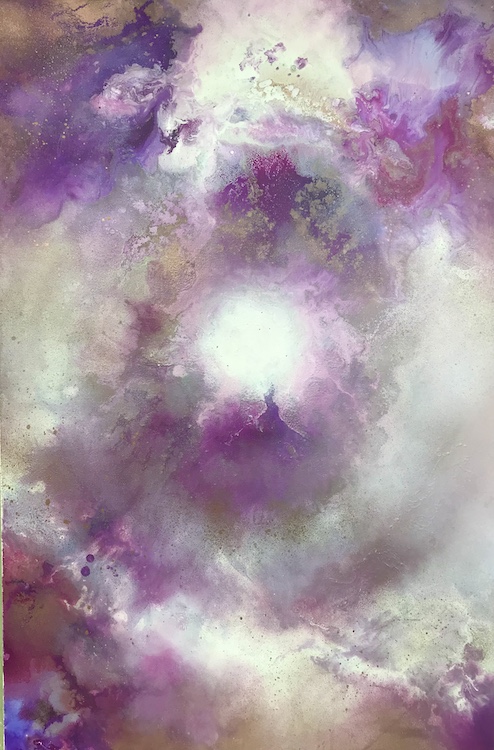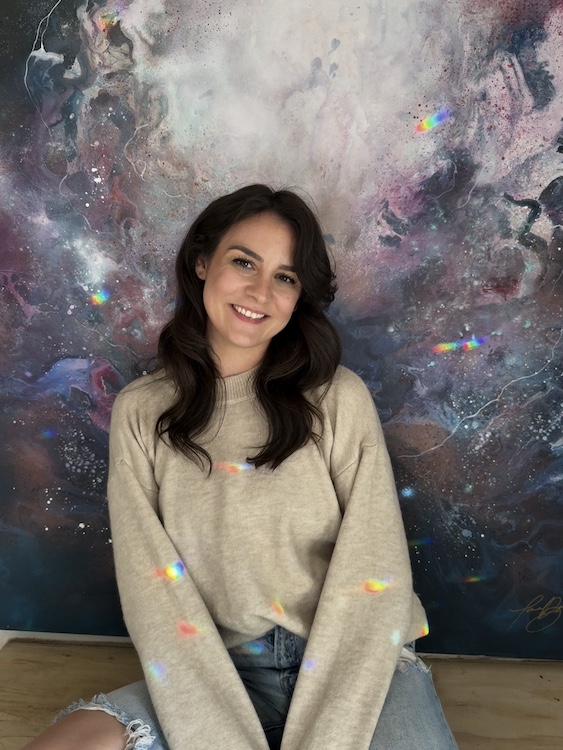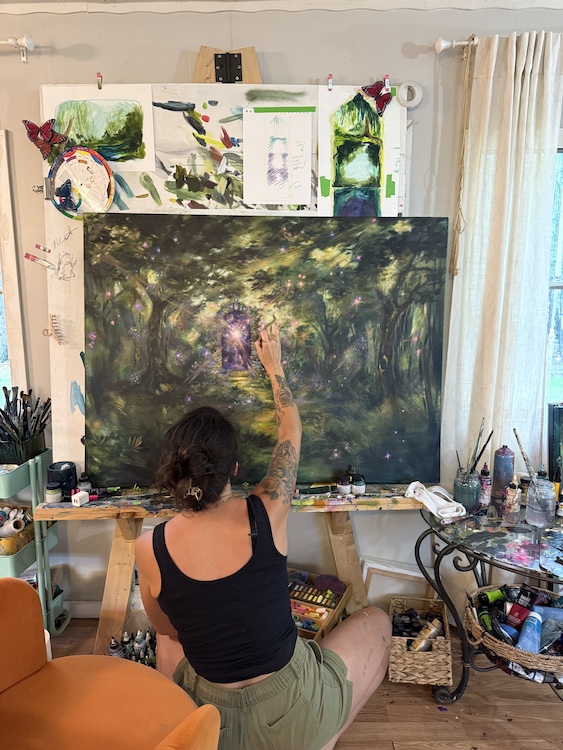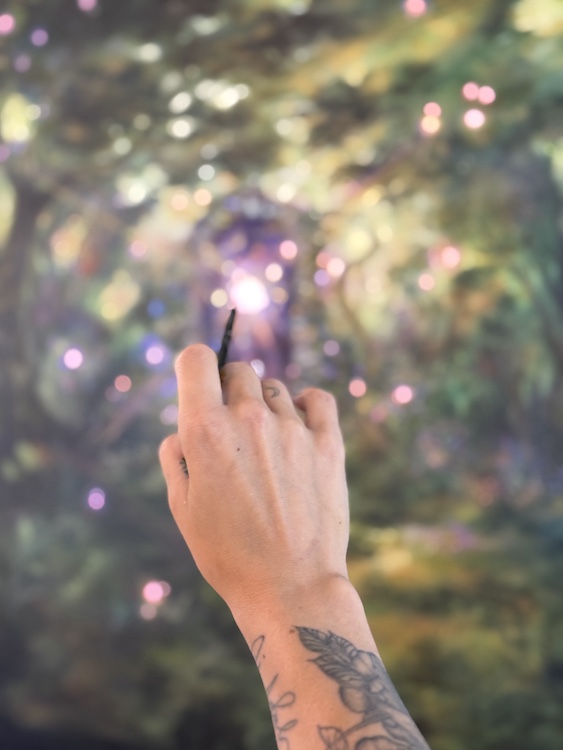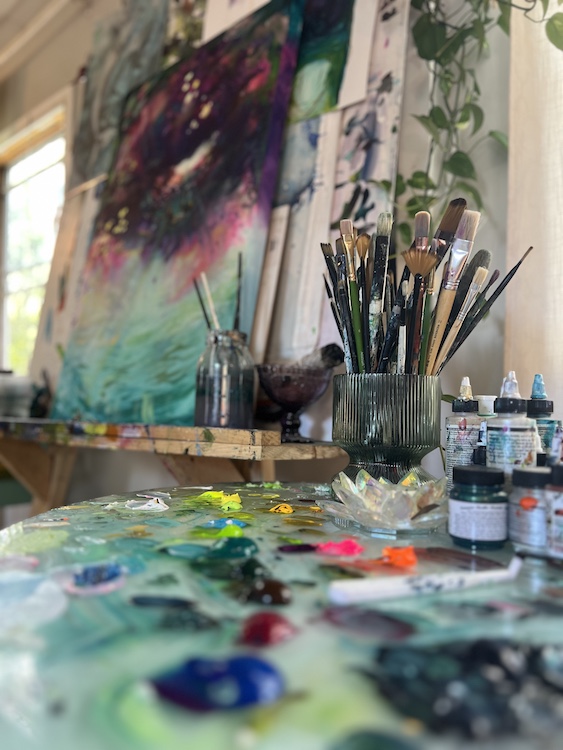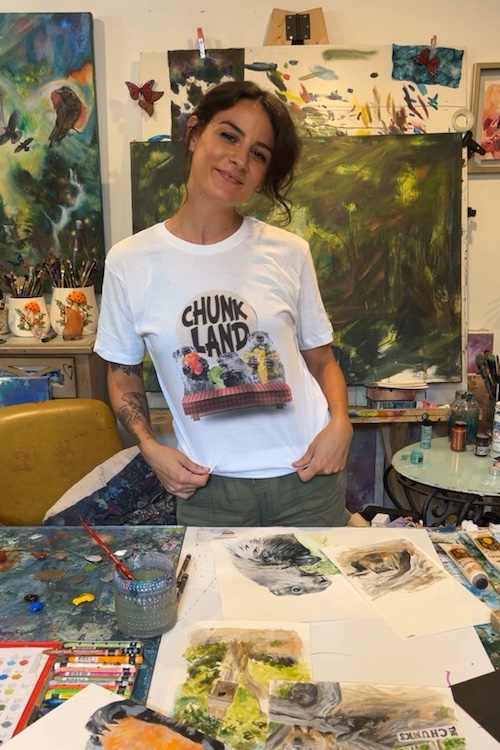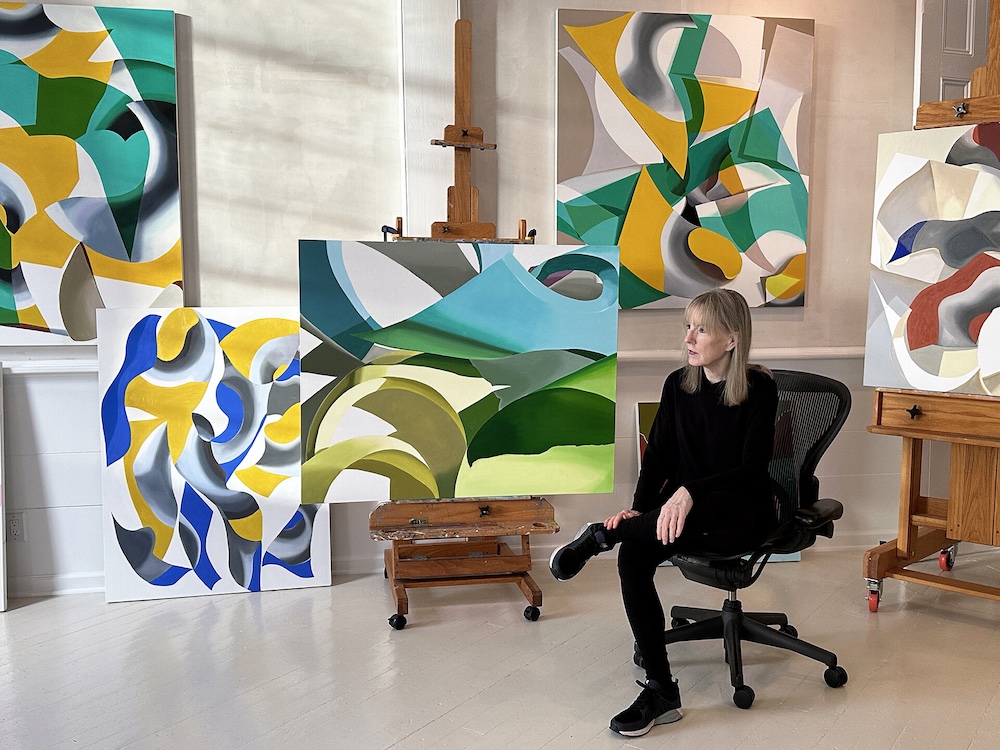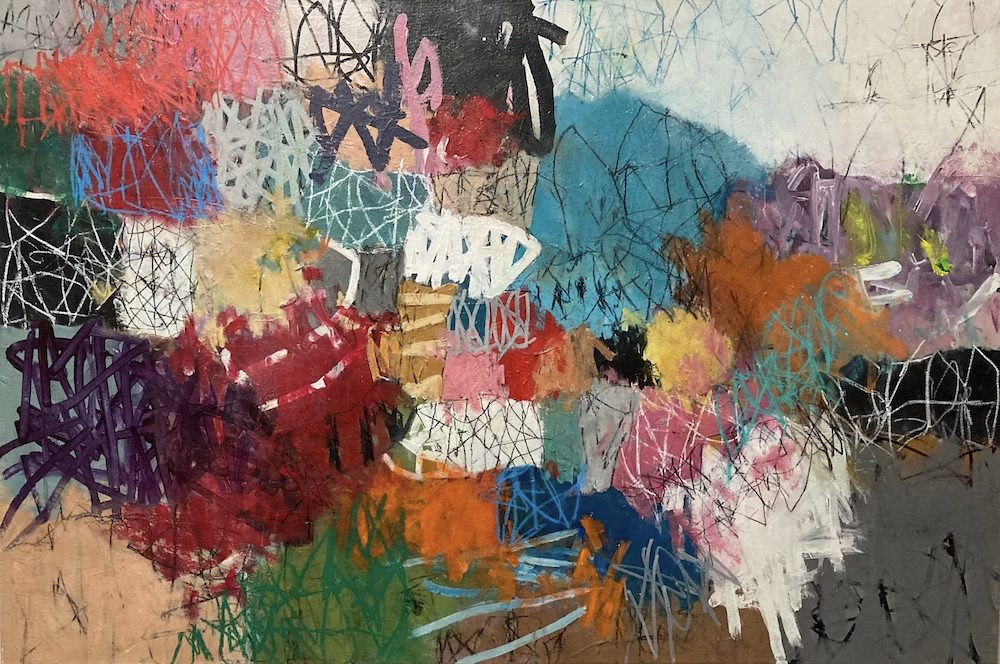
33 1/3 & Under: Meet Artist + Creative Energy Guide Tara Bach
For artist Tara Bach, her lifelong love of painting has fueled another powerful life purpose – one through which she counsels others to harness their own creativity and positive energy to pursue better lives.
Bach’s paintings are bold, fantastical, and otherworldly – beautiful abstractions with a formative lifeforce and unique energy. Beginning in 2021, Tara began complementing her pursuit of art with the study of “Human Design.” It is a philosophy and practice through which she now helps clients, including many creatives like herself, correctly harness their energy to live more inspired, peaceful, and productive lives.
Read on to hear how this fascinating, 32-year-old Saugerties-based artist and mother is channeling her creativity to produce influential art and help others find their own inspiration.
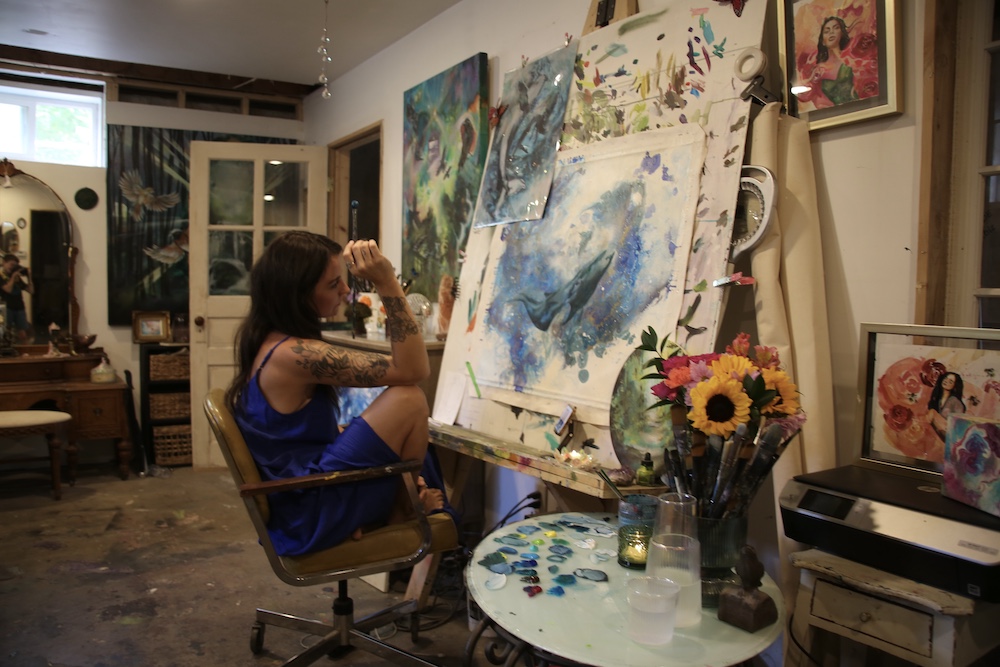
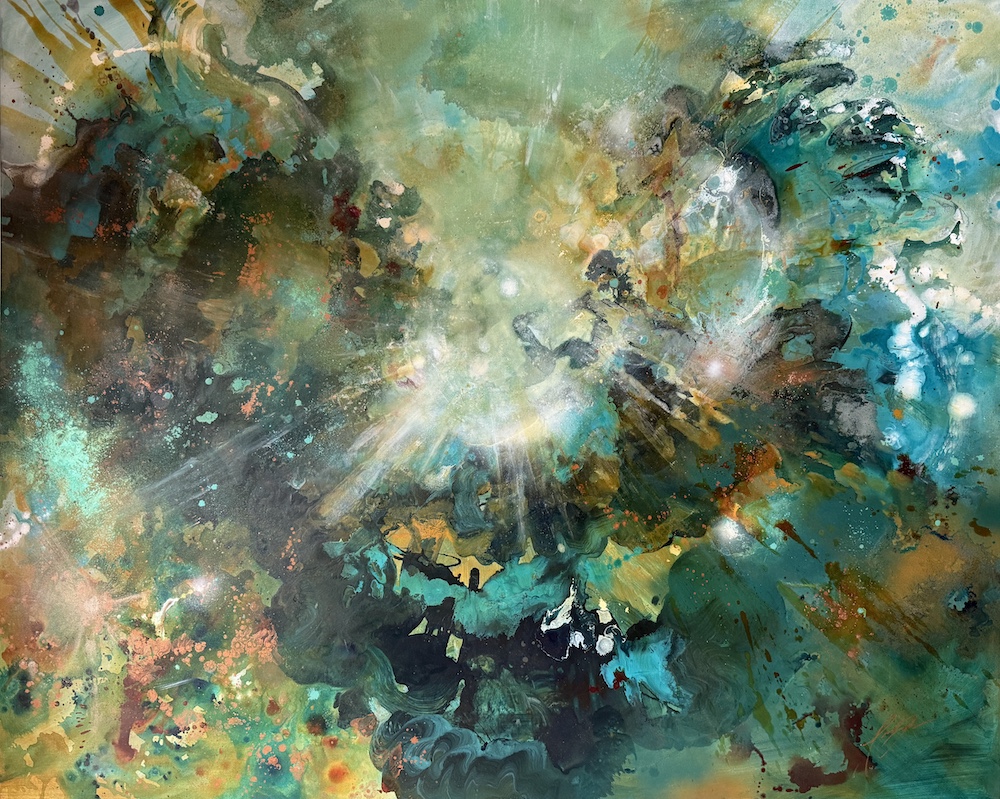
Tara Bach on Abstract Painting
INSIDE+OUT: Your life’s work marries two unique but complementary disciplines – painting and what you call “Human Design,” a one-on-one counseling practice through which people can harness their own positive energy and creativity and find their true purpose in life. But first, let’s talk about your art. When did you become interested in art and painting in particular? And have you had any formal training as a painter?
Tara Bach: I wouldn’t say that Human Design is about harnessing positive energy, exactly; it’s more about remembering the innate intelligence of your own energy and how to live in alignment with it.
As for art, I can’t remember a time when creativity wasn’t part of my world. But I didn’t entirely fall in love with painting until I was studying at SUNY Ulster. There was something about the tactile nature of paint, the slow emergence of form from brush to canvas, and the creation of form. I love that the process would begin to mirror how I was learning to see the world. It became a language beyond words.
I studied Fine Art at SUNY Ulster, continued with Not Sorry Art School online, and took classes at the Woodstock School of Art. But honestly, life itself — motherhood, loss, nature, transition — has been my greatest teacher. Each painting has been an apprenticeship in presence: the practice of being fully with what’s in front of me, whether that’s a landscape, a feeling, or the texture of change itself.
Your paintings capture two different aspects: the natural world around us and these mysterious, fantastical worlds that spring from your imagination. Why these two very different subject matters? And what artists have served as inspirations for your work in both these areas?
Tara Bach: I’m drawn to the edges, the intersection between what is seen and what is felt. The natural world offers a mirror for our inner landscape, and the imagined world gives form to what can’t be explained. Together, they tell a fuller story of what it means to be human.
My work often explores the tension between groundedness and transcendence, decay and rebirth, stillness and movement, the same cycles we find in nature and within ourselves. The fantastical, dreamlike elements are portals, invitations to step beyond logic and into the felt sense of wonder that lives beneath everything. I’m endlessly inspired by artists like Charmaine Olivia, Maya Rochat, and Nikolas Antoniou — each of them explores the relationship between form, light, and psyche in ways that feel alive to me.
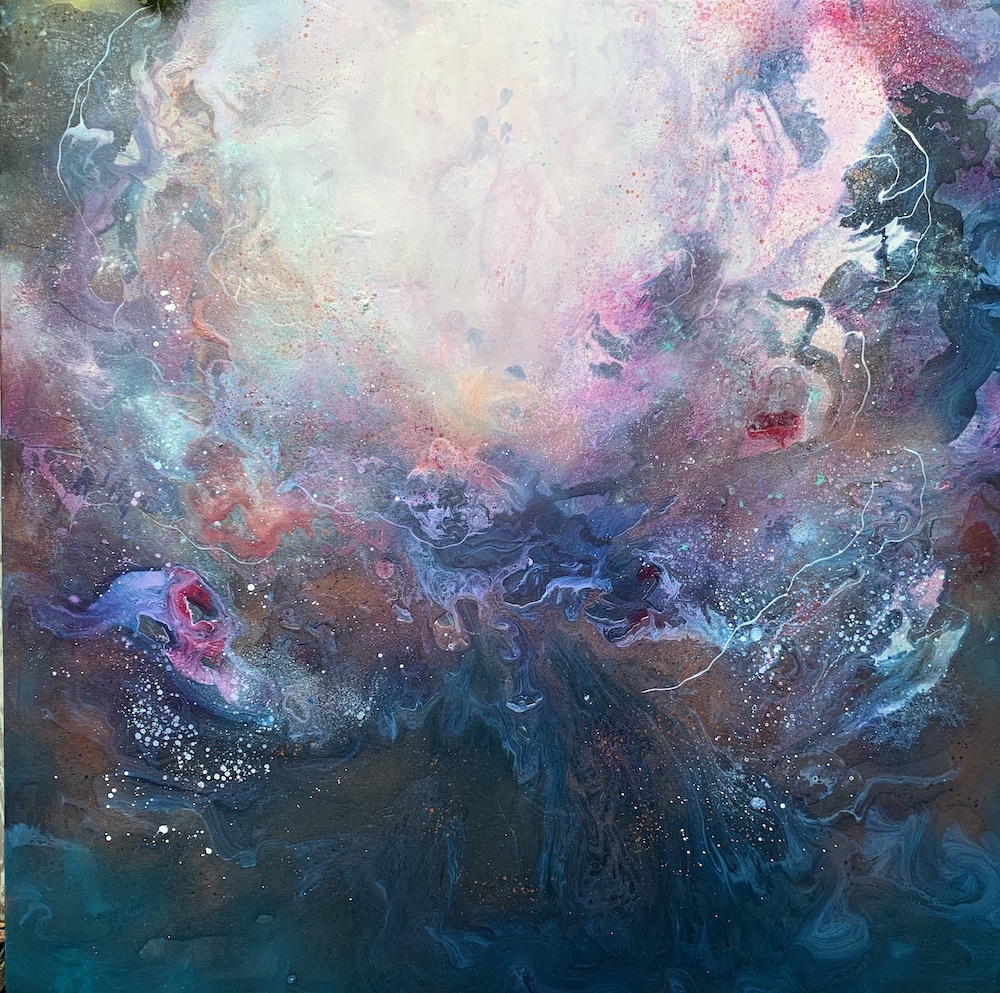
What is the appeal of working in abstract art? Do you find it a more freeing and gratifying style than more formal, realistic work?
Tara Bach: Both have their own kind of presence. Painting from observation is about surrender — seeing the world as it is, without projecting how you wish it would be. It brings you into intimacy with the ordinary. You start noticing how the light bends on a leaf or how stillness has its own rhythm.
Abstract art feels like the other side of that coin. It’s more intuitive, more emergent — like listening to the unseen language of the soul. There’s a dialogue between chaos and form, between control and release. It’s freeing not because it’s unstructured, but because it asks you to trust what wants to move through you. Abstraction is where I let the mystery take the lead. It’s less about painting something and more about allowing something to be painted through me.
Who are some of the local curators who have been supportive of your work?
Tara Bach: Robert Langdon, the former owner of Emerge Gallery in Saugerties, has been an incredible pillar of the Hudson Valley art scene. I’ve exhibited and sold work through his gallery over the years, and his commitment to local artists has deeply impacted me. Kyle Woerner, who curated my recent solo show “Portals: A Journey Through Transitions and Transcendence” in December 2024, has also been a tremendous supporter. His sensitivity to my process and understanding of the thematic threads that run through my work allowed the show to truly come alive.
Tara Bach on Human Design
Now, let’s discuss your counseling work, “Human Design.” You call it “a visual language for your unique energetic imprint.” It’s a fusion of a lot of ancient principles – astrology, the I-Ching, quantum physics, and more. How do you use it to help clients realign themselves to be more creative and connected to life? And when did you begin this practice?
Tara Bach: I was introduced to Human Design in 2021, and it felt like finding a map to something I’d always intuitively sensed but couldn’t name. It gave me a deeper understanding of how energy moves through me — and through others — and how much of our suffering comes from trying to be what we’re not.
When I work with clients, it’s less about “fixing” and more about remembering — remembering what their natural rhythm feels like, where their energy is meant to be shared, and where they’re most at peace. It’s a process of softening back into alignment, of letting life unfold instead of trying to control it.
For creatives, especially, this can be profoundly freeing. It helps them recognize where inspiration truly comes from, when to act, and when to rest. It’s about restoring a relationship with timing, with the intelligence of their own unique nature.
What role did your own study with the Human Design Collective and your current analyst training at the New School of Human Design play in developing this philosophy and practice?
Tara Bach: My studies with the Human Design Collective and the New School of Human Design have been both humbling and transformative. They’ve offered language and structure for something I was already living, the art of awareness. Learning to differentiate between the voice of the mind and the truth of the body has softened how I meet life. I’ve come to see how much creativity and inspiration thrive in stillness, not striving.
This awareness has spilled over into my art; I no longer paint from a place of proving or perfection. I’ve learned to trust the timing of creation, to let it breathe. Some days, that looks like painting all night; other days, it seems like cleaning my studio, walking with my kids, or sitting in silence. The creative process isn’t about constant output — it’s about being attuned enough to know when the current is moving and when it’s not.
How has this work impacted your own art, creativity, and life?
Tara Bach: It’s softened my entire approach to living. Human Design has helped me honor the seasons within myself and learn how to be with times of growth, rest, and reorientation. It’s taught me that creativity isn’t something I have to summon; it is a way of being in the world and with it. Now, I create with more trust, more curiosity, and less urgency. My art feels like a mirror for where I am in my own evolution. It’s no longer about chasing inspiration — it’s about meeting it where it finds me.
What would be your dream assignment?
Tara Bach: I’ve always envisioned a collaborative project where a community transforms a house into an immersive, living art experience. Each room would represent a different world or environment. Perhaps one room would be filled with sand and ocean sounds, another blooming with paper flowers, and a cozy breakfast nook wrapped by a handcrafted willow tree. Another filled with hanging stars, walls etched with constellations or whispered poetry. I think about it as a metaphor for the human condition — how we’re all “houses” with inner worlds that others rarely see. The project would invite people to enter, feel, and co-create — to witness the beauty in the unseen corners of themselves and others.
Tara Bach on Living in the Hudson Valley
How did you wind up in the Hudson Valley, and what is it about this area that you most love?
Tara Bach: I moved to the Hudson Valley as a child with my mom and brothers. I still remember seeing the “Welcome to Saugerties” sign for the first time — the sense of calm that washed over me. It felt like the kind of place where imagination could take root.
I’ve lived here most of my life, and what I love most is how art and nature feel inseparable here. The shifting light, the river’s moods, the way the mountains breathe with the seasons — it all weaves into my work. Now raising my own family here feels like coming full circle. This place has a soul, and it keeps calling me back.
Where are some of the venues and events that you would recommend Hudson Valley art-lovers frequent to see inspiring work? And where might people be able to see your work in the near future?
Tara Bach: The Saugerties Artist Studio Tour is one of the most inspiring events I know. It’s not just an exhibition — it’s a community experience. You get to step into artists’ worlds, see their spaces, ask questions, and witness the stories behind the work. I’ve been a tour member for a decade, and even when I take a break from showing, I always go — it reignites something in me.
Who are some of the local artists and creatives that most inspire you?
Tara Bach: Isaac Abrams has been a wonderful friend and influence over the years. His studio is like stepping into another dimension — full of history, color, and story. He’s one of those rare people who carries the lineage of art in both spirit and practice. Christopher Seubert, one of my instructors at SUNY Ulster, has also been a significant inspiration. His discipline, his ability to translate the human form into something both raw and reverent — it’s stayed with me. Honestly, though, I’m inspired by so many here — potters, sculptors, musicians, shop owners — people who live with intention and artistry in everything they do.
What is it about the Hudson Valley that makes it unique to live and work here?
Tara Bach: It’s the energy — the convergence of history, nature, and creativity. There’s a sense of reciprocity here. The community truly supports one another, and that sense of belonging is rare and beautiful.
What impact do you, as an artist, have on your community?
Tara Bach: I give back through creative education. Teaching kids’ art classes has become one of my favorite parts of my work. I love holding space for kids to express themselves freely — to see the world through their own imagination without rules or expectations. We focus on foundational art principles, as well as intuition and play. It’s really about nurturing self-trust — letting them know their ideas are worthy just as they are. Watching a child discover their own creative voice is one of the most rewarding experiences I know.
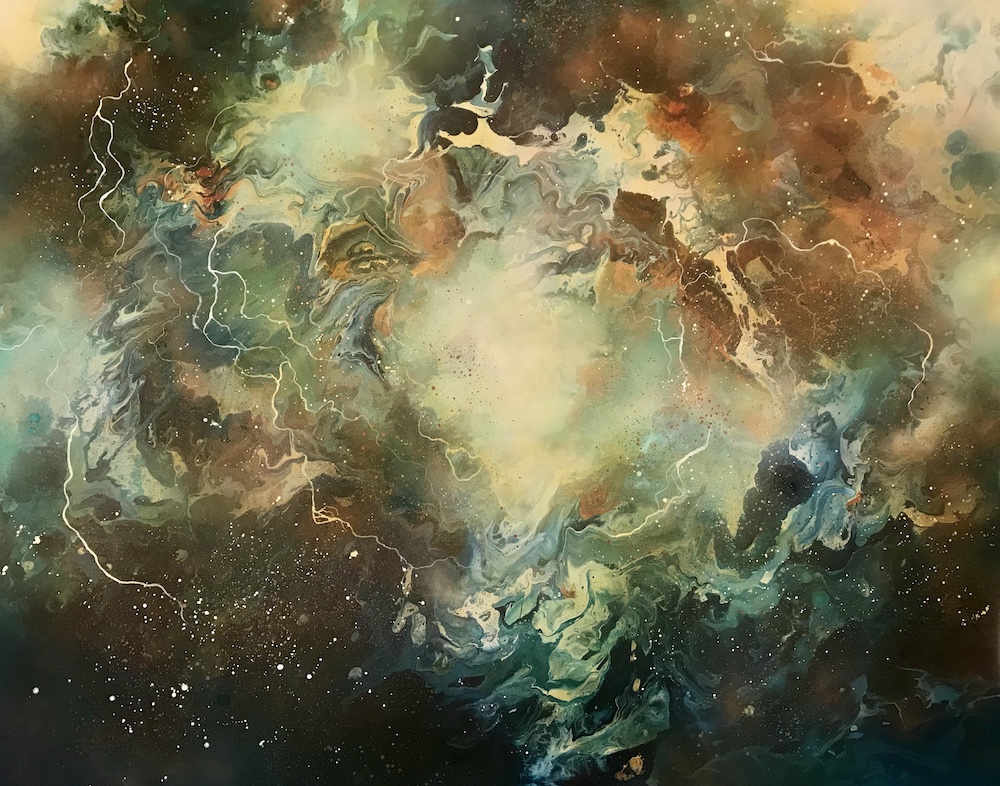
Tell us something about yourself that people might be surprised to know.
Tara Bach: I have been working on illustrating a children’s book! It’s based on the internet-famous groundhog Chunk and an organic farmer, Jeff Permar. It is such a joyful project blending my love for visual storytelling and nature into something playful and heartwarming for kids and families. I also absolutely love playing sports. It’s something people don’t expect from me — but my softball team is a massive part of my joy. It keeps me connected to play, teamwork, and embodiment — all things that also feed my art.
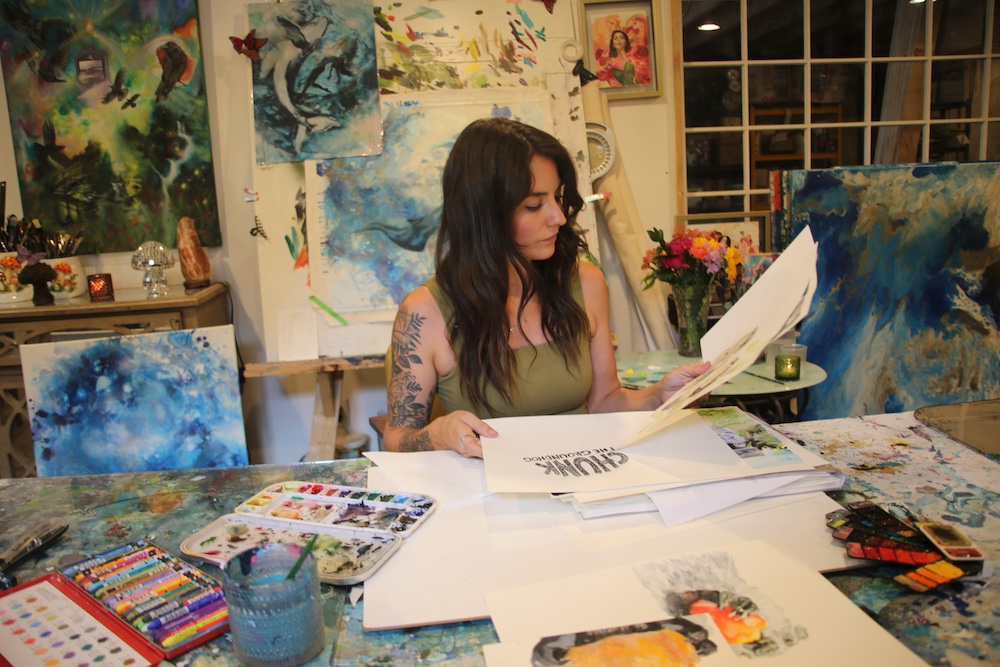
Ten More Things to Know about Tara Bach
What is your most treasured possession?
I don’t know if I would consider myself one who covets possessions, but I would say the home my husband and I built together would be it. It was the most enduring project of my life, piece by piece, with our own hands. The process and dedication held so many experiences, exhaustion, laughter, and love. It’s not just a place we live in — it’s a testament to patience, endurance, and co-creation.
What or who is the greatest love of your life?
My family — without question. They are my anchor and my mirror, constantly reflecting to me who I am and what truly matters. My children remind me how to see the world with wonder and presence. They are my greatest teachers in love and life.
Who or what inspires you personally?
Presence. The World itself. The way light filters through a window or the sound of my kids laughing in another room. The small, sacred moments that remind me I’m alive. Inspiration can show itself in so many ways; it’s everywhere when you’re paying attention.
When and where were you the happiest?
Happiness, for me, isn’t one moment, but the in those intimate small ones. My happiest moments are when I’m fully present, when I feel both grounded and infinite, held by life precisely as it is in all of its complexities.
What is your greatest fear?
My greatest fear is allowing fear itself to make my world smaller, to shrink away from experiences, relationships, or opportunities that could expand me. I’ve learned that fear often shows up as protection, but it can also be a cage. My work, both as an artist and as a Human Design guide, constantly invites me to meet fear with curiosity — to ask, “What is this trying to show me?” rather than letting it dictate my direction.
What is your greatest extravagance?
Our home, once again. It represents the kind of extravagance that isn’t about luxury but about devotion. It’s a space that reflects an unfolding vision, our hard work, and the artistry of a life built slowly and intentionally.
What do you most value in your friends?
Depth, honesty, and presence. I value my friends who can hold both laughter and silence. They aren’t afraid of vulnerability or the complexity of being human. The kind of friendships that are like mirrors, reflecting truth, love, and sometimes the hard medicine of growth. They are the most inspiring people, and I deeply cherish them for continually walking beside me through the shifting seasons of life and allowing me to do the same for them.
Who are your heroes in real life?
My heroes are the quiet visionaries — the people who live with integrity, compassion, and creative courage. The ones who make you feel safe to be yourself. It’s the teachers who nurture curiosity, parents who lead with love, artists who create from spirit, and those who rebuild after loss with grace. My heroes are the ones who keep their hearts open in a world that often asks us to close them.
Which living person do you most admire?
I deeply admire anyone who chooses authenticity—those who continue to choose to live from their truth, even when it’s uncomfortable. I think of artists, healers, and everyday people who show up for life with open hearts, who are unafraid to evolve, to admit mistakes, and to love anyway. I admire those who embody gentleness as strength. These people remind me that presence itself can be revolutionary.
If you could have one superpower, what would it be?
With the way the world is at the moment, I would love the ability to dissolve the illusion of separation. To awaken that remembrance in others, helping them see their own way of being as a sacred force of connection, healing, and belonging. In many ways, this is the same intention that moves through my work with Human Design — guiding others back to the truth of who they are and the beauty of their natural expression.
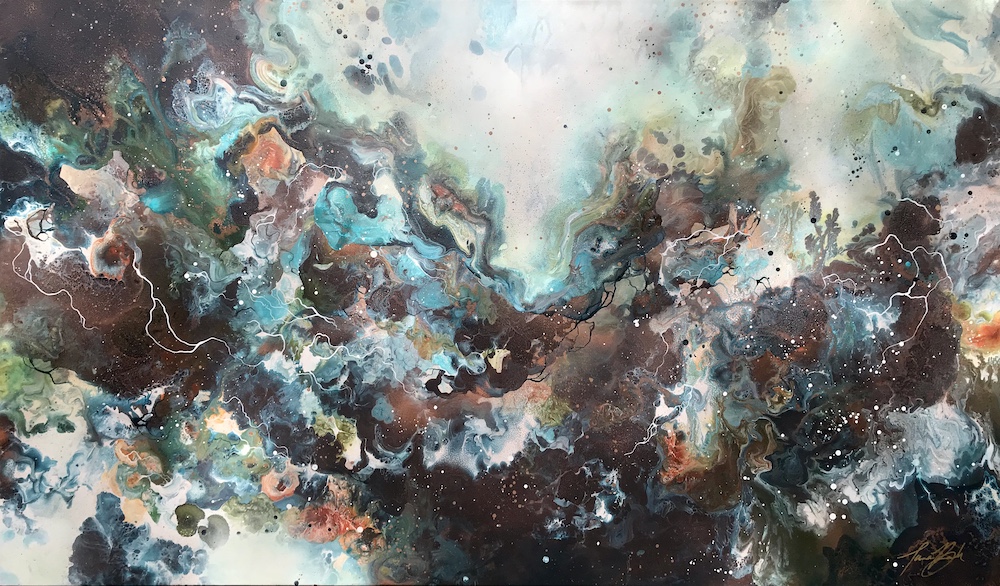
Photos courtesy of Tara Bach
Contributing writer Sal Cataldi is a musician, writer and former publicist living in Hudson Valley NY.
Follow/Connect with Tara Bach via Website | Facebook | Instagram
+ + +
Click HERE to see all of our exclusive interviews with the amazing folks who proudly call the Hudson Valley home.
Write a Comment
You must be logged in to post a comment.



